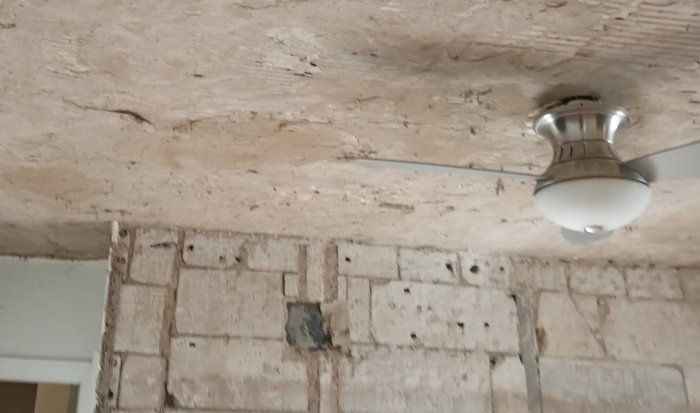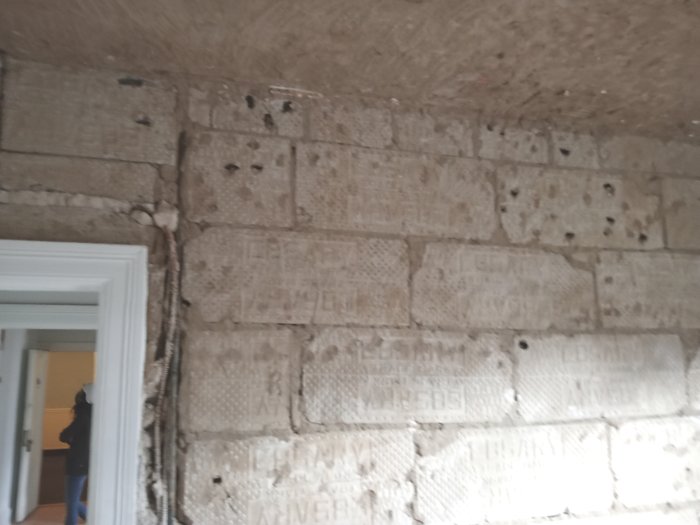The truth about black mold in plaster
I have an old apartment in Washington, DC. There was a bad plumbing leak from above. The insurance company from the co-op association sent a contractor to tear out the plaster to look for black mold. They have torn out most of the plaster and still haven't found any black mold. Can you come by to inspect for black mold and estimate replacing the plaster ?

This plaster was all torn out unnecessarily. Black mold doesn't grow on plaster or these other materials. It is a huge project to replace this plaster

Black mold doesn't grow on plaster !!
Black mold won't grow on plaster, terra cotta block, gyp block, brick, concrete, etc.
Black mold only grows on fibrous materials, like paper and wood. Mold grows on sheetrock because of the face paper. Mold will grow on rock lath, also known as gypsum lath because it also has face paper, or wood studs. Mold grows like crazy on plywood. Mold will grow on wall paper on plaster, sometimes even if the wall paper has been painted. Also, mold should grow on wood lath, but I have never seen it. I think the reason mold is hesitant to grow on wood lath is because the pores are saturated with lime, and the lime is probably was too caustic for the mold. The fibers provide food for mold, where hard materials like cement and plaster don't.
In case you are wondering, terra cotta blocks were used for a plaster base on ceilings in Washington, DC up until about 1920. There was always a concrete slab above. Either the blocks were suspended and supported the concrete until it set up, or the concrete had some way of supporting the block. More about lathing and plastering over terra cotta blocks in the future. This method of construction with terra cotta block on ceilings for a plaster base is still used in Spain. There are You tube videos about this.
Gypsum blocks, known as gyp blocks, were used until the 1930's. These blocks were made out of cast molding plaster. Usually these were made by a manufacturer like United States Gypsum. In this case, these blocks were made a company called Ebsary plaster, as stamped on the block. Sometimes these blocks were cast on the job by the plasterers. Usually, the blocks were laid by the plasterers as well. I know this from the old buzzards I worked with years ago.
The method of construction on this old building is completely immune to black mold. I really is sad to see all this work torn out for nothing.